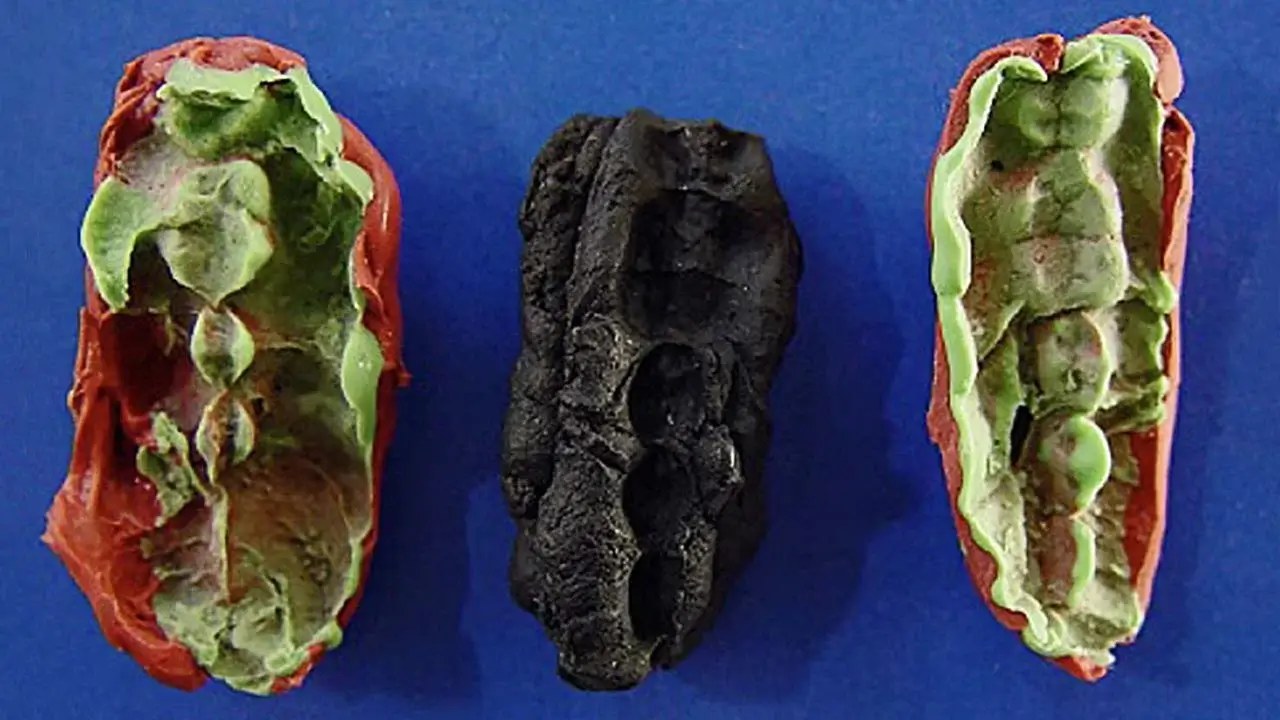By: Kaleena Fraga | All That Interesting
Ten thousand years ago, a group of Stone Age adolescents in Sweden chomped down on a tar-like black resin made of birch bark. Much like modern day teenagers, they spat the “chewing gum” out when they were done with it, oblivious to the fact that researchers far in the future would use the glob of sticky resin to better understand their diet and oral health.
The chunks of “chewing gum” were found 30 years ago at the Huseby Klev archaeological site near the Swedish city of Gothenburg. Anders Gotherstrom, the co-author of a new study about the gum in Scientific Reports, told CBS News that the teenagers probably masticated the resin so that it could be used to assemble tools and weapons.
“This is a most likely hypothesis,” Gotherstrom added, explaining: “They could of course have been chewed just because they liked them or because they thought that they had some medicinal purpose.”
And in doing so, they left behind tantalizing clues about their lives.
“There is a richness of DNA sequences in the chewed mastic from Huseby Klev,” Emrah Kırdök of Mersin University Department of Biotechnology, and the study’s lead author, said in a statement.
Though researchers in 2019 used the gum to map the genetic profiles of the Stone Age teenagers, Kırdök and his team looked specifically at what the gum could reveal about the teenagers’ diets and oral health.
They found that the Stone Age teenagers, before popping the resins in their mouths and starting to chew, had enjoyed a meal of deer, trout, and hazelnuts.
They also found trace DNA of bird species, including mallard, tufted duck, and European robin, as well as other animals like the red fox, arctic fox, and wolf. The researchers suspect that the teenagers used their teeth to prepare the bird bones and the canidae pelts as tools or clothing.
Skeletons With Rings Around Their Necks Uncovered At A 1,000-Year-Old Cemetery In Ukraine
“This provides a snapshot of the life of a small group of hunter-gatherers on the Scandinavian west coast,” Gotherstrom said. “I think it is amazing, there are other well established methods to work out what nutrition and diet relates to the Stone Age, but here we know that these teenagers were eating deer, trout, and hazelnuts 9,700 years ago on the west coast of Scandinavia.”
That wasn’t all the researchers found out. As Gotherstrom noted, they also discovered that one of the teenagers “had severe problems with his teeth.”
Their study revealed that one of the teenagers had “a number of bacteria indicating a severe case of periodontitis.” This gum infection would have been painful, and Gotherstrom explained that the teenager probably started losing their teeth shortly after chewing the resin.
The chewing gum has thus revealed what Stone Age teenagers ate and some of the health problems they experienced. But Gotherstrom also noted that the discovery has even deeper implications, and draws a fascinating link between the adolescents in Sweden and people living today.
“You have the imprint from the teenager’s mouth who chewed it thousands of years ago,” he said. “If you want to put some kind of a philosophical layer into it, for us it connects artefacts, the DNA, and humans.”
* * *
NEXT UP!
Archaeologists In Israel Unearth 3,800-Year-Old Skeleton of Baby Buried In A Jar
Archaeologists excavating a site in Jaffa, Israel, recently made a macabre discovery: a 3,800-year-old jar containing the skeleton of a baby.
As Ariel David reports for Haaretz, researchers from the Israel Antiquities Authority (IAA) uncovered the poorly preserved remains, which were buried in a shallow pit about ten feet below street level, while surveying the ruins of the 4,000-year-old city ahead of construction.
The practice of burying babies in jars dates back to the Bronze Age and continued until as recently as the 20th century, IAA archaeologist Yoav Arbel tells Live Science’s Laura Geggel. But while evidence of such funerary rituals regularly appears in the archaeological record, scholars remain unsure of the practice’s purpose.
* * *
READ MORE: Lovelock Cave: A Tale of Giants or A Giant Tale of Fiction?
Interesting! Untouched, Century-Old Fruitcake Found In Antarctica
Telegram: Stay connected and get the latest updates by following us on Telegram!
We’d love to hear from you! If you have a comment about this article or if you have a tip for a future Collective Spark Story please let us know below in the comment section.

